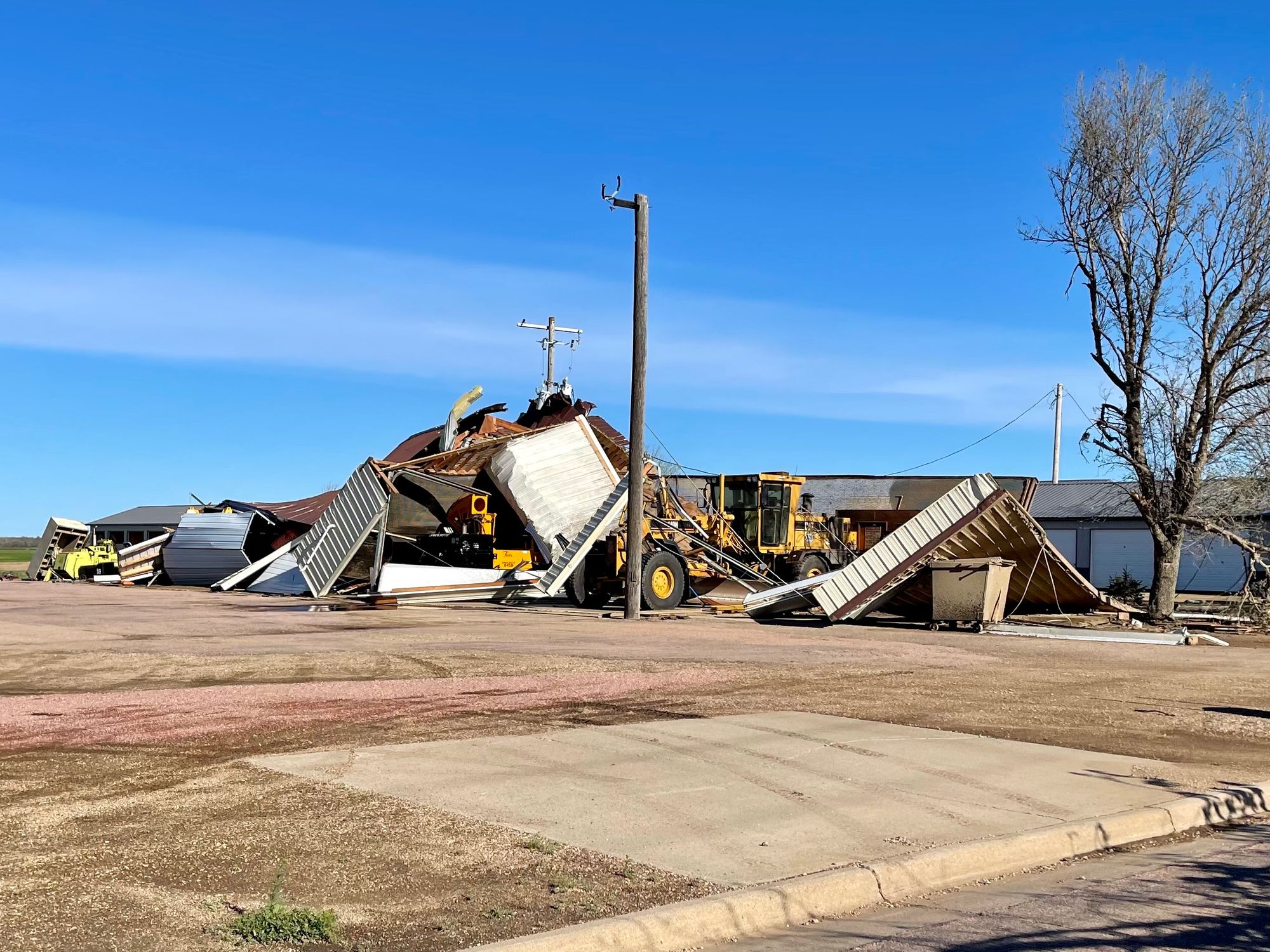This is a paid piece from the Sioux Metro Growth Alliance.
Simplified: A May 12 wind storm brought "unprecedented" damage to the state, as Gov. Kristi Noem said, with some communities in the Sioux metro hit particularly hard. Here's a look at how people came together to help each other out in the aftermath.
Why it matters
- The storm brought between 70 and 105 mph winds, according to the National Weather Service, and officials confirmed two people were killed in the region.
- The storm caused damage in 28 counties statewide. Locally, it meant many downed trees and power lines, as well as damage to roofs, cars, sheds, fences and more.
- In the aftermath, though, communities came together to start clean-up efforts, make sure their neighbors were safe and provide food for first responders.
"People are right away helping people, and you hear chainsaws going," said Butch Oseby, mayor of Crooks.
How were some metro communities affected?
Some of the most significant damage was in Salem, where a nursing home – and several family homes – lost roofs, trees were down everywhere, and the entire town was without power for a stretch.
"I would guess that 60 to 80 percent of houses in our town need some sort of work," said Mitch Rayman, city council member in Salem. "It’s going to take quite a long time to get Salem back to where it was."
Nearby, Hartford also suffered quite a bit of damage, said Amy Farr, executive director of the Hartford Chamber of Commerce and development foundation.
- Farr also said though power came back quickly in Hartford, some in rural communities like Humboldt didn't have power for more than a day.
Crooks saw many downed trees, but Oseby said the community overall fared pretty well, especially compared to some of the damage seen elsewhere.
- Even with less damage, though, Oseby said it was still a community effort to get things cleaned up after the storm.
Who were the helpers?
Rayman said within 45 minutes after the storm passed, he saw people out knocking on doors, bringing around food and making sure people were safe.
- Salem residents also immediately got to work helping the residents of the nursing home that suffered damage, Rayman said.
"Anybody who had access to little mini buses or vehicles to help transport people ... they immediately sprung into action," he said, adding that others meanwhile set up beds and made sure people were comfortable for the night.
Nearby farmers also sent equipment down to Salem to help with cleanup, and a local bank had people out helping clear out farms so those farmers' fields would be ready for planting.
Meanwhile, in Hartford, Farr shared a story about a groundbreaking event that'd been scheduled for the day after the storm.
- Several lunches had been ordered, and though the event was canceled amid the storm damage, the company kept the lunch order and delivered sandwiches to crews helping with cleanup.
"To see everyone pretty much drop what they were doing and help their neighbor is something you don't see too often," Farr said. "Its empowering to see the community come together as they have – especially the last year or two – and then with the storm ... You know that when something happens you can count on them."
What happens next?
In Salem, Rayman estimates it'll be a year if not longer before the community is back to where it was before the storm.
"It doesn't just end three days later," he said. "The community will continue to help throughout the whole process."


